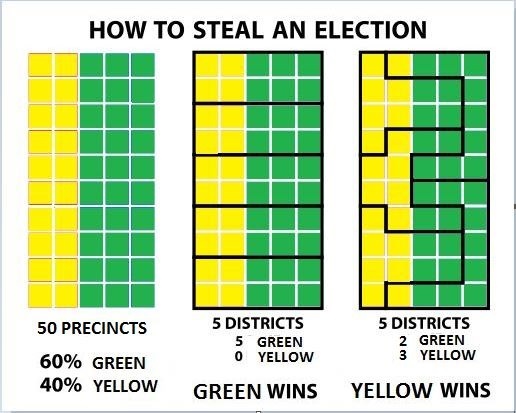I guess there’s an election in Georgia today.
The candidates were interviewed on the radio this morning, sticking to talking points, defending the $50 million dollars they spent on the contest, and reiterating that old trope that we “all need to get out and vote.”
Relative to developed countries and autocratic dictatorships, US voter turnout is pretty low. In Belgium, turnout among eligible voters is 87%. In Sweden it’s 83%, and 80% in Denmark. Even Slovakia and the Czech Republic, which hover around 60%, embarrass the United States’ 55% turnout rate. And that’s not even to mention the landslide victory of Saddam Hussein’s 2002 campaign, where he won every single vote from Iraq’s 11 million eligible voters. That’s an engaged electorate!
And so it’s not surprising that we hear this a lot. “We all need to get out and vote, because every vote counts.” Somehow we’ve got this idea in our heads that in order to really know the will of the people, the sample size needs to equal the population size.
What?
We don’t count all of anything. That’s the whole point of statistics.
The fact of the matter is that a sample size of 55% is ridiculously high, and absolutely representative of the population. Plenty of us are voting. The issue isn’t whether our sample size is large enough. It’s whether the sample itself is representative of the population.
And so now this triggers the whole “gerrymandering” talk, which, if you want to have this conversation over Thanksgiving Dinner or in a wedding toast or something we suggest you use the term “congressional redistricting” so your uncle (you know the one) doesn’t get up and start yelling. But anyway gerrymandering is this idea that a political party can draw the lines of voting districts in a way that it benefits that party.
Here’s a picture that I found on the internet that does a pretty good job of showing how it works:
Now, this has been going on as long as our country has – it got started before our first Congressional Election in 1789, and both parties run with it as far as they can when they have the opportunity. But see now it’s running into trouble. Republican redistricting has had issues on the past on account of it being just totally, unapologetically racist, but less flagrant examples have a hard time being challenged in a meaningful way. But a real challenge could change as early as next year, when the Supreme Court will rule on whether a Wisconsin district map unconstitutionally limits the influence of Democratic voters.
It’s far from a sure bet which way the court will fall on this one. The only real conversations now indicate that it’s going to be a narrowly divided vote. But there’s a chance!
It’s easy, these days, to lose faith in our elective process. We’ve seen two of our last three presidents win the office while losing the popular vote. We’ve seen Citizens United pave the way for unprecedented, untraceable campaign financing and super annoying phone calls pretty much around the clock. And we’ve sat around for pretty much our entire nation’s history as the ruling party plays make-it-take-it with congressional districting maps. It looks like finally, we may see a win for those people who would like to see a government that represents its electorate.
It’s time we stop complaining about 55% voter turnout, and start taking the right sample.
Down the Rabbit Hole
It starts innocently enough. You've got a few minutes free on a Sunday afternoon and you remember that the car needs an oil change. You ... Read more
Bring Back the Draft
After the election we heard a lot about how things were going to get crazy, and that we really needed to pace our outrage. It ... Read more



